Friday
Community Articles, World, otherShambhala Day Aspiration at Ise, Japan
By Josée-Ann Cloutier
Happily arrived, I flowed along, mimicking the Isuzu River with families and clusters of people clad in business suits, toward Ise Jingu, Japan’s most sacred Shinto shrine, to make offerings and meet the sun goddess Amaterasu Omikami (Heaven-Illuminating Great Deity).
“Wow, here, at last,” I heard myself utter in awe, moved by the giant sugi trees [cryptomeria japonica], the largest gold fish I have ever seen and the freshest air these lungs have yet encountered.
I had come to Ise, Japan on Shambhala Day to offer aspirations for the year of the earth ox on behalf of the sangha. I was visiting Asia for the first time, spending a week in South Korea and two weeks in Japan, for a research project on community bath houses. (Yes, community bath houses!) It seemed appropriate to bring in the New Year in a sacred environment such as Ise.
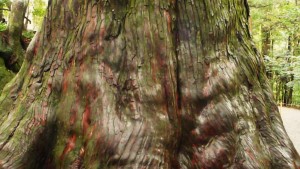 Before leaving for Asia, I had sent a sangha-announce message inviting New Year aspirations, suggesting that donors make a gift to the Shambhala scholarship fund. I also collected aspirations during a group retreat at Karme Choling. Twenty people responded, including some who gave their names but kept the wish in their mind, a secret.
Before leaving for Asia, I had sent a sangha-announce message inviting New Year aspirations, suggesting that donors make a gift to the Shambhala scholarship fund. I also collected aspirations during a group retreat at Karme Choling. Twenty people responded, including some who gave their names but kept the wish in their mind, a secret.
My motivation was to ensure that the magic of Shambhala programs remain accessible to all, especially during these challenging times. I have benefited from the scholarship fund and wanted to help replenish it when the opportunity arose. Eventually, I received more than 30 aspirations and I transcribed them into a nice, earthy and elegant journal made of washi paper and wrapped in a white khata.
As I walked up the large stone steps approaching Amaterasu’s main shrine, I wished that every Shambhalian could experience this place. Mindlessly, I flashed a picture with my camera – before a guard sharply waved his hands as to say, “No pictures!” I quickly apologized and tucked away my camera.
Next, I approached masses of people in front of the shrine and added an offering to a pile of coins and bills that overflowed like the Isuzu River. I bowed twice, clapped to call the kami, offered a prayer and closed with another clap. Moving aside to make room for other pilgrims, I stood awhile peering over the gate to see what else was going on.
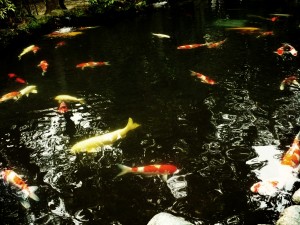 Suddenly, something happened that words can’t really describe, except perhaps in the hands of a skilled writer or poet. A tear fell, as if out of nowhere, and it was in that moment that I understood what was the big deal about this place. An older man and I exchanged a glance as a priest performed a ceremony for a group of ten or so people inside the gate, close to Amaterasu’s secret dwelling place. I waited until the ceremony had finished and then read aloud the sangha aspirations for the New Year in a low but audible voice, in order not to draw attention to myself.
Suddenly, something happened that words can’t really describe, except perhaps in the hands of a skilled writer or poet. A tear fell, as if out of nowhere, and it was in that moment that I understood what was the big deal about this place. An older man and I exchanged a glance as a priest performed a ceremony for a group of ten or so people inside the gate, close to Amaterasu’s secret dwelling place. I waited until the ceremony had finished and then read aloud the sangha aspirations for the New Year in a low but audible voice, in order not to draw attention to myself.
Then I walked to the river to offer the aspirations held in the journal. Across the river, trees and branches stood in hues of purple and green, marking the ground of great simplicity and beauty. I read the aspirations aloud again, as a curious lady watched, and then offered the journal and khata into the river. Together, we watched as they dissolved into the gently flowing water.
Overall, the Ise experience felt very familiar, the suits and numerous torii gates reminding me of the Magyal Pomra encampment grounds at Shambhala Mountain Center. The atmosphere’s formality and protection of what is sacred had a Dorje Kasung feeling: both the Kasung and Shinto traditions relate to environment, protection and sacredness.
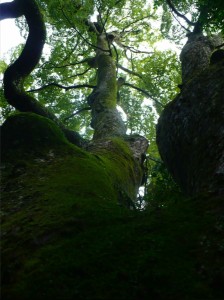 At Ise, it all made so much sense, to be here and to start fresh in a place with the most refreshing fragrance.
At Ise, it all made so much sense, to be here and to start fresh in a place with the most refreshing fragrance.
I highly recommend at least one visit to Japan, for perspective in understanding where many Shambhala forms come from – to see them manifested on such a large scale has been life-changing.
But one can also experience the presence of Amaterasu Omikami at Daitozan Jinja, Shambhala’s own Kami Shrine at Shambhala Mountain Center, located behind the encampment grounds, thanks to Chogyam Trungpa Rinpoche and Kanjuro Shibata Sensei.
In the year of the earth ox and for many years thereafter, it is my deepest and sincerest wish that everyone connects with and feels their pure heart of sadness, where a tear can be shed with a smiling face.
To learn more about the shrines at Ise, click here and here.
If you would like to donate to the Shambhala Scholarship Fund, click here; be sure to mark your donation as “scholarship fund” in the comment section.
Your generosity will help others who need financial assistance.

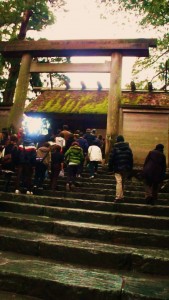
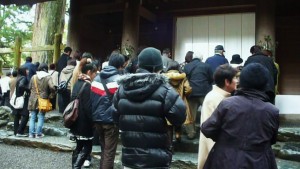
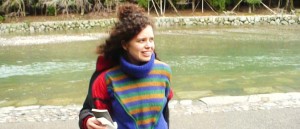
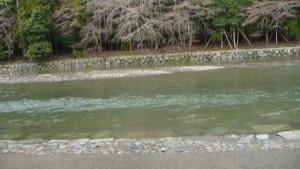




Mar 13, 2009
Reply
Readers interested in background on Shambhala’s relationship with Amaterasu Omikami, and the construction of Daitozan Jinja at Shambhala Mountain Center, are directed to Acharya Jeremy Hayward’s fine book, “Warrior-King of Shambhala: Remembering Chogyam Trungpa,” beginning on page 301.